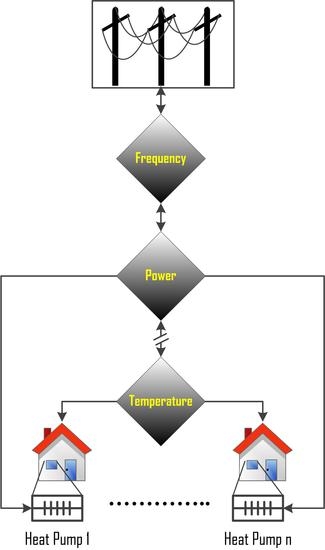Demand Response Design of Domestic Heat Pumps
Abstract
:1. Introduction
1.1. Problem Description
1.2. Potential Solution
- Short term operating reserve (STOR) service is used in a form of demand reduction or backup generation. With a short notice of 4 h ahead, a STOR provider must supply at least 3 MW power over a minimum interval of 2 h [11]. The average payment of the STOR service was £25,000/MW per year in 2015/16 [12,13,14].
- Static frequency control by demand management (FCDM) service needs a minimum power of 3 MW over a half-hour time interval to deliver this service. System frequency triggers the FCDM service when it declines below 49.7 Hz [16]. The average payment of the FCDM service was £35,000/MW per year in 2015/16 [12,13,14].
1.3. Paper Contribution
- Developing a linear mathematical model of the DHPs in low-carbon domestic buildings.
- Managing power consumption of the DHPs based on a square root function of system frequency while considering climate-controlled temperature inside the buildings.
- Reporting the available DR reserve of the DHPs in advance.
- Estimating an average payment of such DR reserve.
1.4. Paper Structure
2. Mathematical Models
2.1. System Frequency
2.2. Domestic Heat Pump
3. Emergency-Based Demand Response
3.1. Prediction
3.2. Assumption
- The value of () is estimated to drop from the current amount of 360 GWs to just 150 GWs in the UK by 2035, as presented in [8].
- Daily ambient temperatures of January, February and December (2014) in the UK [23] were used to predict ambient temperatures on a winter day by 2035 using a normal probabilistic distribution. The winter was only considered because the DHP unit will be in a semi-idle state in UK residential dwellings during summer.
- The dynamic DR controller of the DHPs is activated based on a generation loss of 1.32 GW from the UK power system [24]. Meanwhile, the static DR controller is activated based on a normal probabilistic deviation between supply and demand with the mean value of 0 GW and standard deviation of 0.5 GW over a day.
- Each DNO is assumed to be responsible for providing the DLC signals that control the DHPs accordingly, using information and communication technologies (ICTs). In this context, aggregator is the technical term that should be used to call DNO entities.
- Domestic buildings were modelled considering the low-carbon houses of high-thermal mass materials, which indicate a slow decline of the internal temperature when the DHP is switched off over a short-term timescale [25].
- Equivalent thermal resistivity is synthesized using a uniform probabilistic distribution to represent a variety of modelled buildings. This consideration is identified based on an evaluation of heat losses through external walls and fenestrations [21].
3.3. Implementation
4. Simulation Results
- Thermal mass of low-carbon buildings.
- Thermal resistivity of these buildings.
- Demand diversity across DNO areas.
5. Conclusions
Acknowledgments
Conflicts of Interest
References
- Dall’O’, G.; Galante, A.; Pasetti, G. A methodology for evaluating the potential energy savings of retrofitting residential building stocks. Sustain. Cities Soc. 2012, 4, 12–21. [Google Scholar] [CrossRef]
- Albadi, M.H.; El-Saadany, E.F. A summary of demand response in electricity markets. Electr. Power Syst. Res. 2008, 78, 1989–1996. [Google Scholar] [CrossRef]
- Short, J.A.; Infield, D.G.; Freris, L.L. Stabilization of Grid Frequency through Dynamic Demand Control. IEEE Trans. Power Syst. 2007, 22, 1284–1293. [Google Scholar] [CrossRef] [Green Version]
- Callaway, B.D.S.; Hiskens, I.A. Achieving Controllability of Electric Loads. IEEE Proc. 2011, 99, 184–199. [Google Scholar] [CrossRef]
- Molina-garcía, A.; Bouffard, F.; Kirschen, D.S. Decentralized Demand-Side Contribution to Primary Frequency Control. IEEE Trans. Power Syst. 2011, 26, 411–419. [Google Scholar] [CrossRef]
- Gelazanskas, L.; Gamage, K.A.A. Demand side management in smart grid: A review and proposals for future direction. Sustain. Cities Soc. 2014, 11, 22–30. [Google Scholar] [CrossRef]
- Shariatzadeh, F.; Mandal, P.; Srivastava, A.K. Demand response for sustainable energy systems: A review, application and implementation strategy. Renew. Sustain. Energy Rev. 2015, 45, 343–350. [Google Scholar] [CrossRef]
- National Grid. System Operability Framework; National Grid House: Warwick, UK, 2014. [Google Scholar]
- National Grid. Future Energy Scenarios; National Grid House: Warwick, UK, 2015. [Google Scholar]
- Element Energy. Frequency Sensitive Electric Vehicle and Heat Pump Power Consumption; Element Energy: Cambridge, UK, 2015. [Google Scholar]
- National Grid. Short Term Operating Reserve Standard Contract Terms; National Grid Electricity Transmission: Warwick, UK, 2014. [Google Scholar]
- Power Responsive. Demand Side Flexibility Annual Report; National Grid House: Warwick, UK, 2016. [Google Scholar]
- Open energy. Demand Response Market Overview; Lincoln House: London, UK, 2014. [Google Scholar]
- Curtis, M. Overview of the UK Demand Response Market; University of Reading: London, UK, 2015. [Google Scholar]
- National Grid. Firm Frequency Response Review; National Grid House: Warwick, UK, 2016. [Google Scholar]
- National Grid. National Grid Frequency Control by Demand Management User Manual; National Grid House: Warwick, UK, 2016. [Google Scholar]
- Seyedi, M.; Bollen, M.; STRI. The Utilization of Synthetic Inertia from Wind Farms and Its Impact on Existing Speed Governors and System Performance; Electricity and Heat Production, Elforsk AB: Stockholm, Sweden, 2013. [Google Scholar]
- Johnson, R.K. Measured Performance of a Low Temperature Air Source Heat Pump; Department of Energy Office of Scientific and Technical Information: Oak Ridge, TN, USA, 2013.
- National Grid; Affordable Warmth Solution (AWS); National Energy Action (NEA); Peaks and Plains Housing Trust. Monitoring Air Source Heat Pumps in Domestic Properties; National Energy Action (NEA) Technical: London, UK, 2013. [Google Scholar]
- Power Knot. COPs, EERs, and SEERs How Efficient is Your Air Conditioning System? Power Knot LLC.: San Jose, CA, USA, 2011. [Google Scholar]
- Model a Dynamic System. Available online: http://uk.mathworks.com/help/simulink/gs/define-system.html (accessed on 1 May 2016).
- Office for gas and electricity market (Ofgem). Regional Differences in Network Charges for Information; Office for Gas and Electricity Market: London, UK, 2015.
- Weather data of temperature. Available online: http://www.weatherfamily.org/bracknell/wxarchive.html (accessed on 28 January 2017).
- National Grid. Report of the National Grid Investigation into the Frequency Deviation and Automatic Demand Disconnection that Occurred on the 27th May 2008; National Grid House: Warwick, UK, 2009. [Google Scholar]
- Cabrol, L.; Rowley, P. Towards low carbon homes—A simulation analysis of building-integrated air-source heat pump systems. Energy Build. 2012, 48, 127–136. [Google Scholar] [CrossRef] [Green Version]


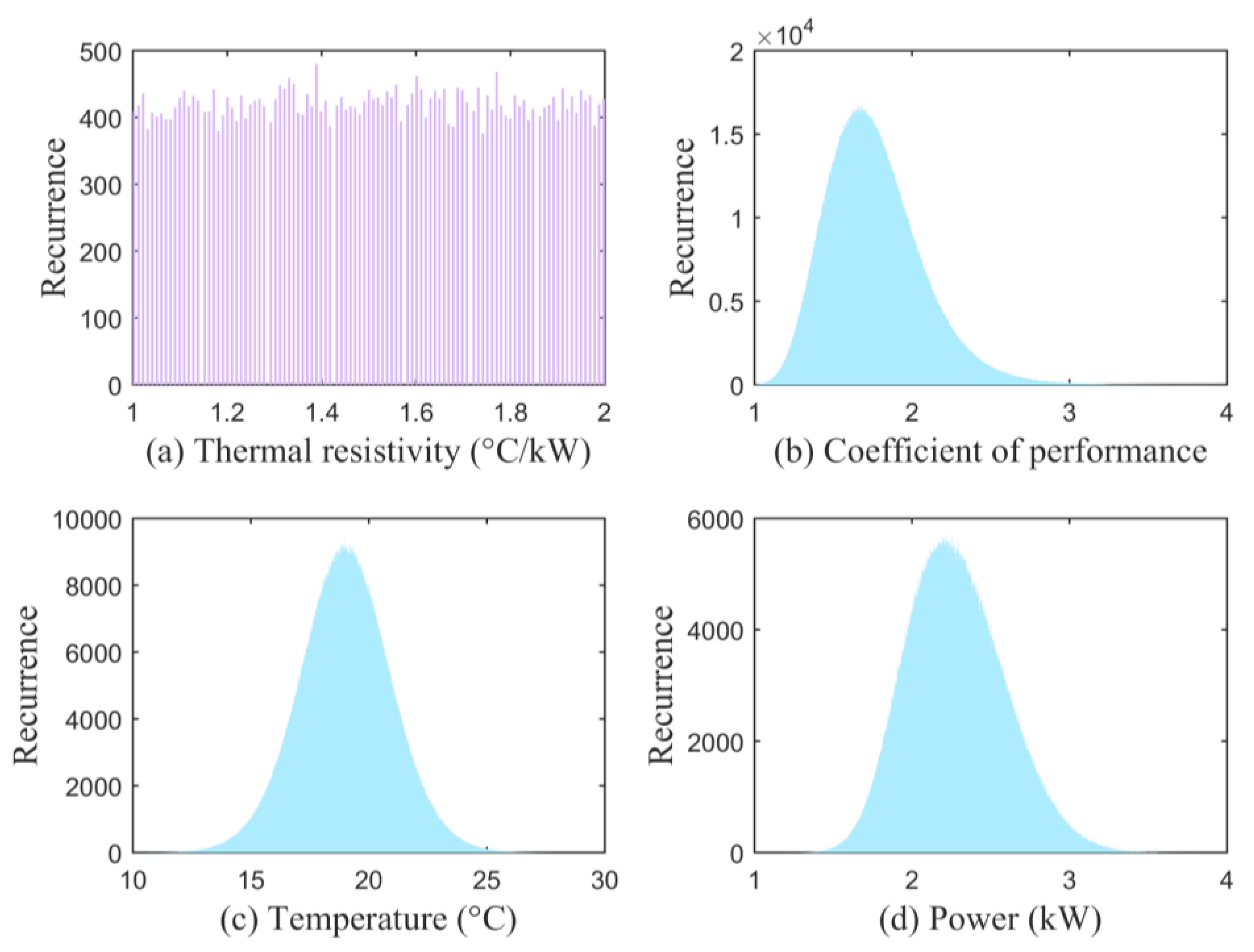
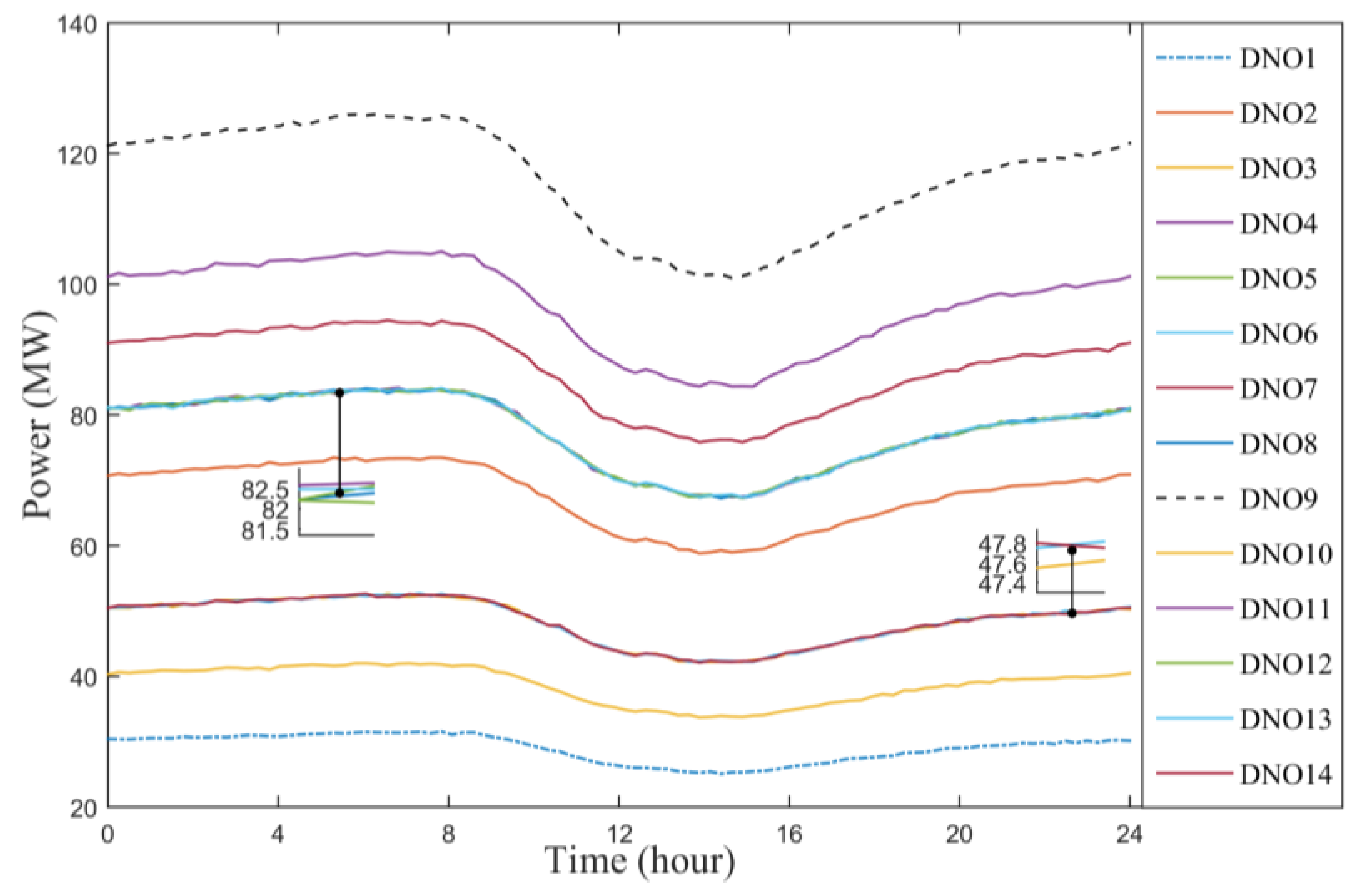
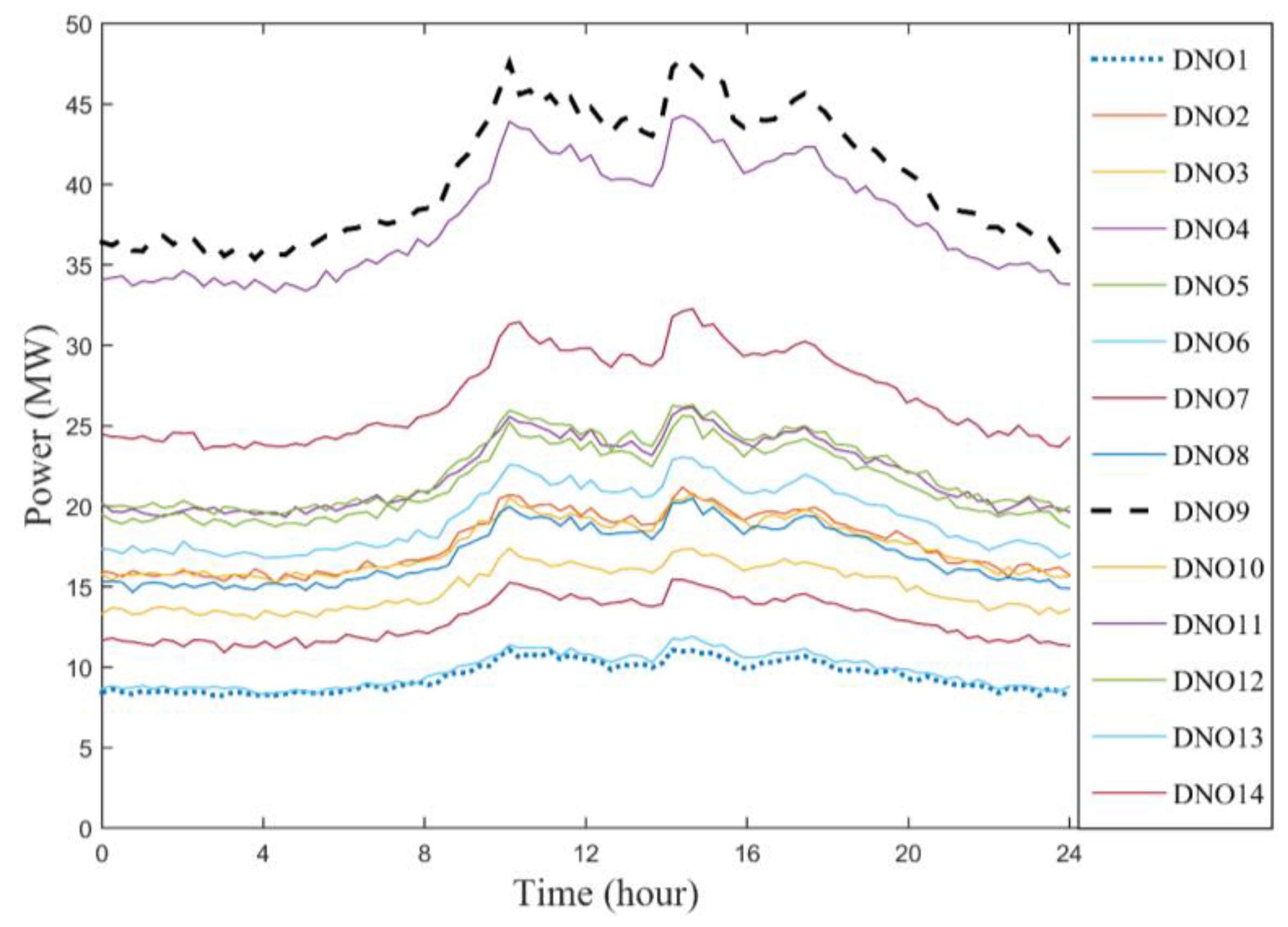
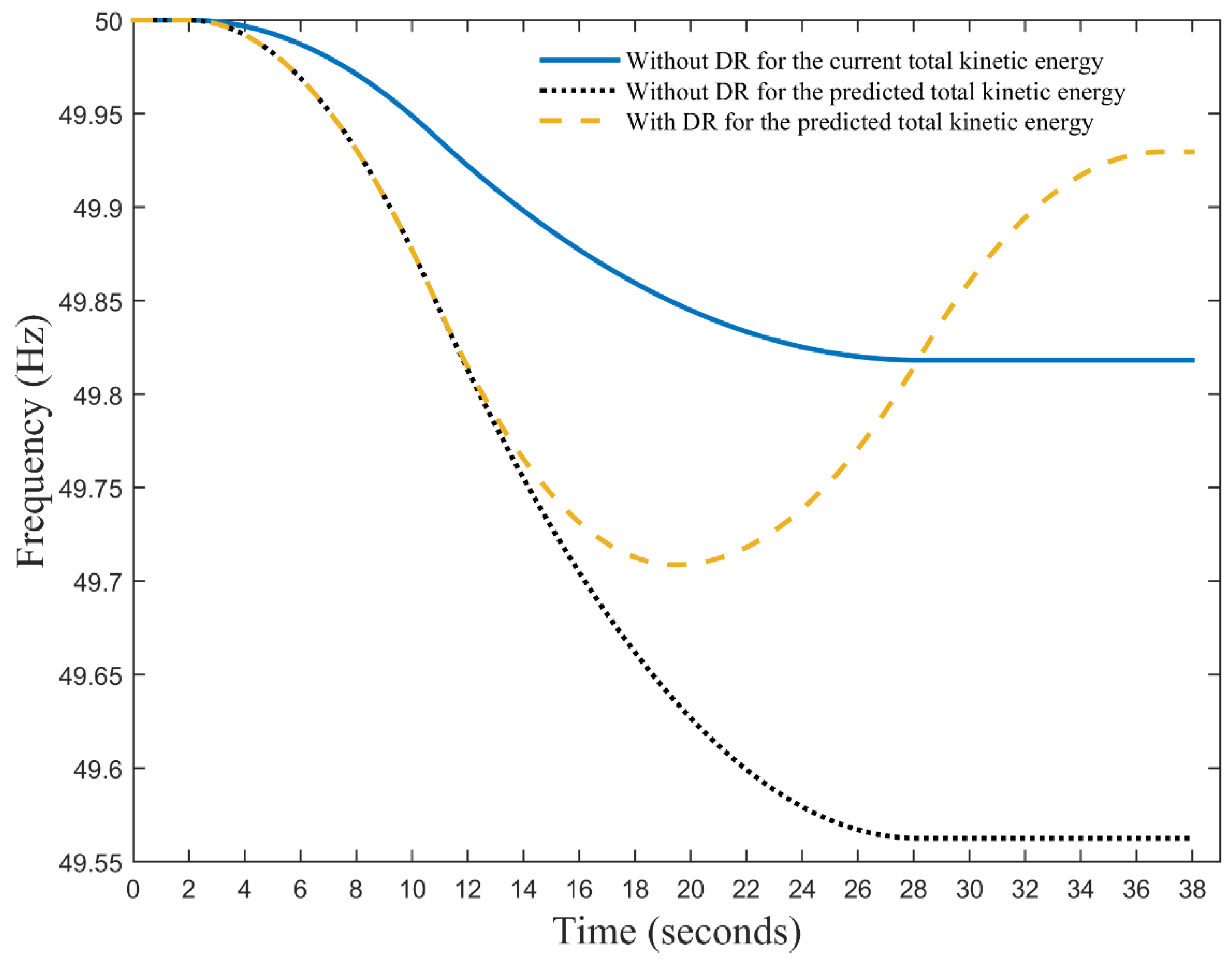
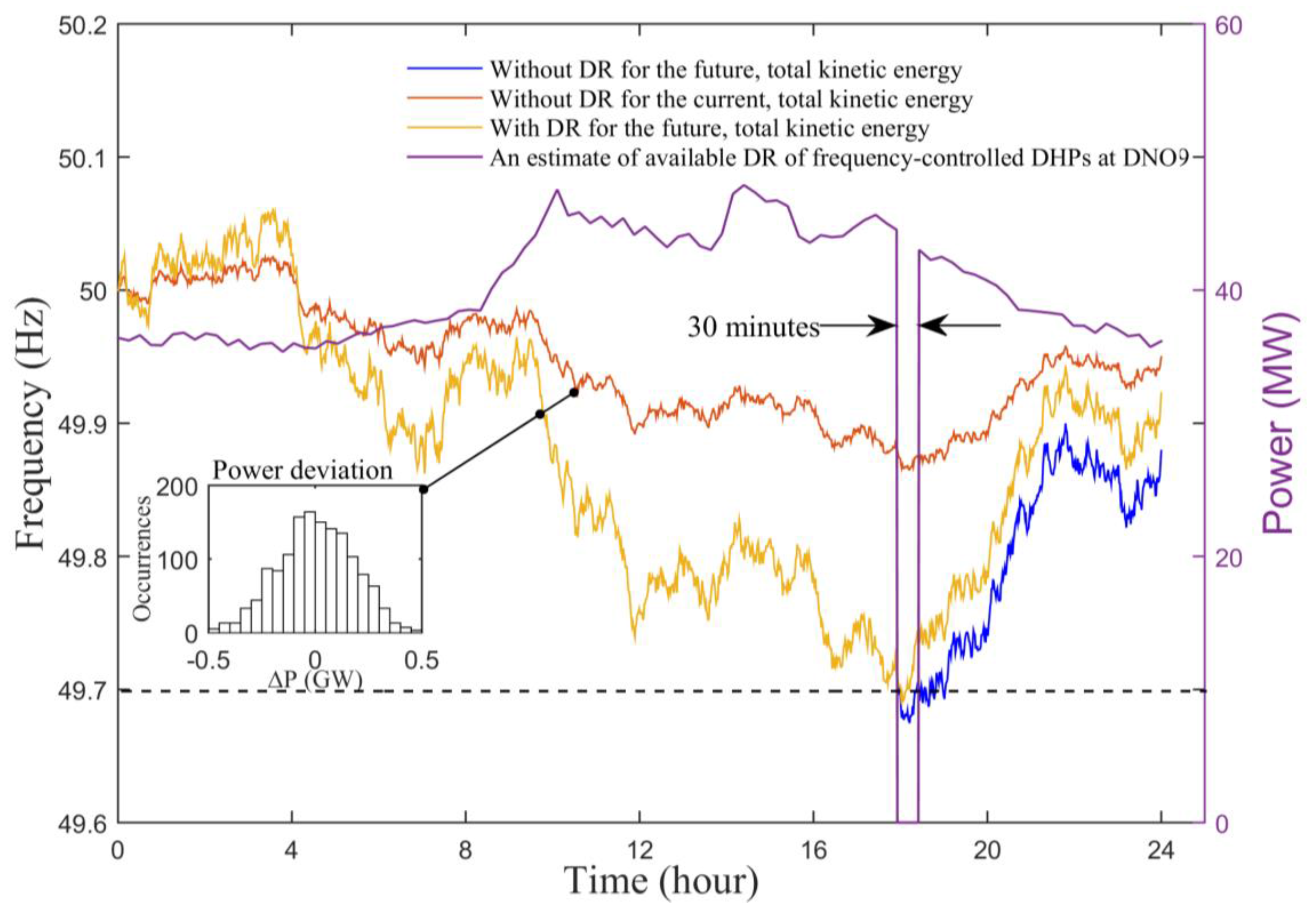
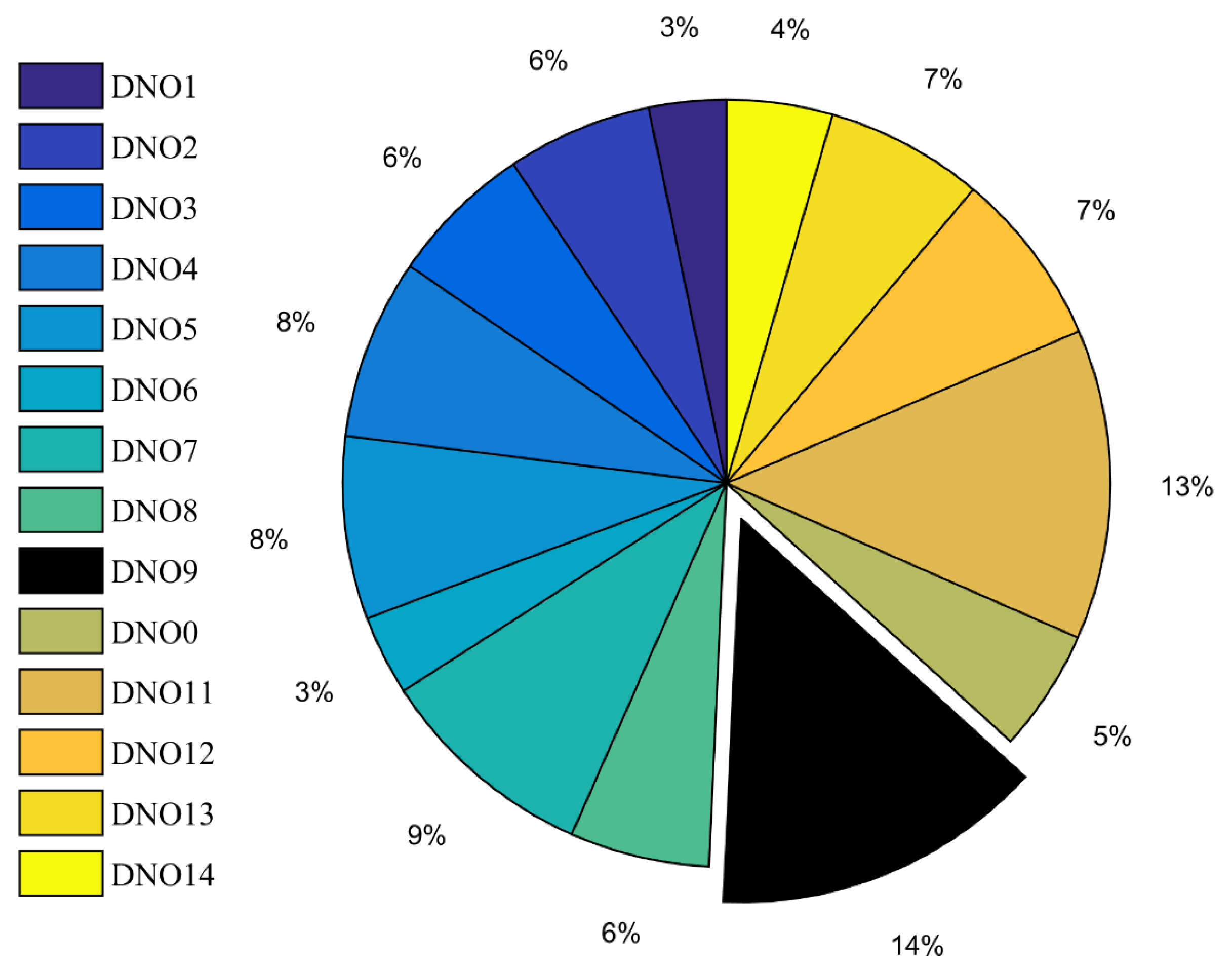
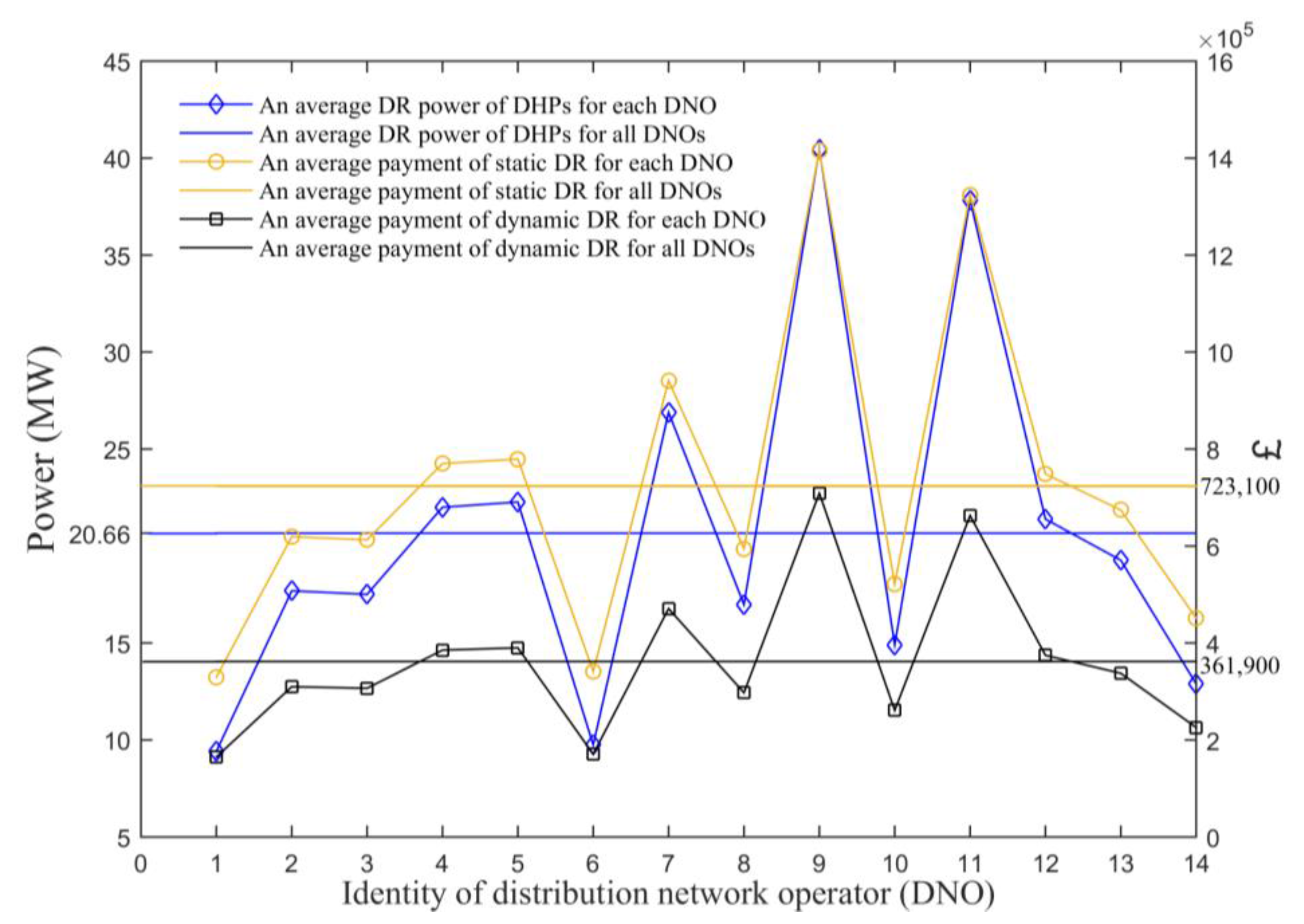
| Symbol | Quantity | Values | In Equations |
|---|---|---|---|
| air density | 1.2 kg/m3 | (5) and (7) | |
| specific heat of air | 1 kJ/kg°C | (5), (7) and (9) | |
| air flow rate | 0.5 m3/s | (5) and (7) | |
| supply temperature | 25 °C | (6) and (7) | |
| return temperature | 19 °C | (8) and (9) | |
| air mass flow | 1 kg/s | (9) |
| Year | The number of the DHPs | |
|---|---|---|
| High Scenario | Low Scenario | |
| 2020 | 386,200 | 183,252 |
| 2025 | 1,912,406 | 485,293 |
| 2030 | 3,306,832 | 713,964 |
| 2035 | 4,198,906 | 849,558 |
| The DNO Area | Predicted Numbers | The DNO Area | Predicted Numbers |
|---|---|---|---|
| DNO1 (North Scotland) | 25,487 | DNO8 (West Midlands) | 67,965 |
| DNO2 (South Scotland) | 59,469 | DNO9 (Eastern England) | 101,947 |
| DNO3 (North East England) | 42,478 | DNO10 (South Wales) | 33,982 |
| DNO4 (North West) | 67,965 | DNO11 (Southern England) | 84,956 |
| DNO5 (Yorkshire) | 67,965 | DNO12 (London) | 67,965 |
| DNO6 (Merseyside and N Wales) | 42,478 | DNO13 (South East England) | 67,965 |
| DNO7 (East Midlands) | 76,460 | DNO14 (South West England) | 42,478 |
| Year | Type of DR Services | Power Reserve | Payment |
|---|---|---|---|
| 2015/16 | Static and dynamic | 374 MW | £9.8m |
| 2035 | Static and dynamic | 663 MW | £17m |
© 2017 by the author. Licensee MDPI, Basel, Switzerland. This article is an open access article distributed under the terms and conditions of the Creative Commons Attribution (CC BY) license (http://creativecommons.org/licenses/by/4.0/).
Share and Cite
Al Essa, M.J.M. Demand Response Design of Domestic Heat Pumps. Designs 2018, 2, 1. https://doi.org/10.3390/designs2010001
Al Essa MJM. Demand Response Design of Domestic Heat Pumps. Designs. 2018; 2(1):1. https://doi.org/10.3390/designs2010001
Chicago/Turabian StyleAl Essa, Mohammed Jasim M. 2018. "Demand Response Design of Domestic Heat Pumps" Designs 2, no. 1: 1. https://doi.org/10.3390/designs2010001



